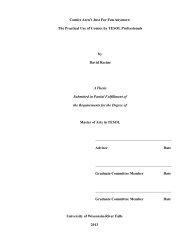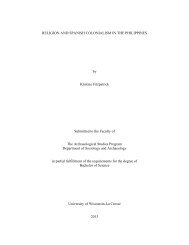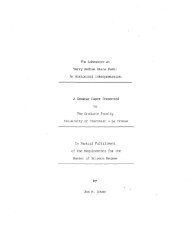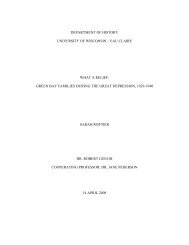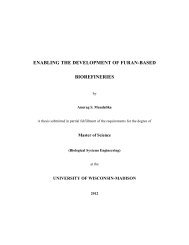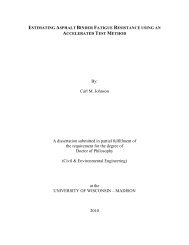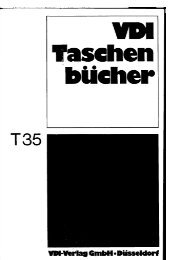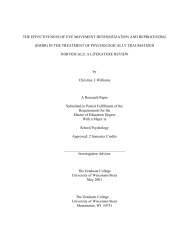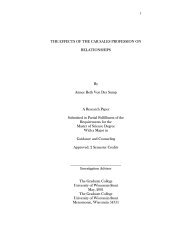William Stratton Ph.D. Thesis - MINDS@UW Home
William Stratton Ph.D. Thesis - MINDS@UW Home
William Stratton Ph.D. Thesis - MINDS@UW Home
You also want an ePaper? Increase the reach of your titles
YUMPU automatically turns print PDFs into web optimized ePapers that Google loves.
transform, gives the number of atoms that sit a distance r away from the average atom in the<br />
sample weighted by the scattering factor. For a crystalline material each atom is locked into a<br />
lattice site so, ignoring defects and thermal effects, the PDF would show an appropriate number<br />
of neighbors at the relative lattice spacings. In polyatomic materials the PDF still gives the<br />
average atomic neighbor distances, but not the type of atoms separated by those distances. The<br />
partial pair distribution functions (PPDFs) help determine what atomic species are present at<br />
each neighbor distance within an amorphous material. The number of PPDFs in an amorphous<br />
material increases with the number of atomic components; a binary atomic system has three<br />
PPDFs, a ternary atomic system has six PPDFs, and so on. For example the three PPDFs in a<br />
binary atomic system AB can be described as: A-A, B-B, and A-B. These PPDFs are obtained<br />
by comparing PDF magnitudes from different scattering experiments (electron, neutron, x-ray, or<br />
resonant x-ray), since the PDF magnitude from the scattering experiment is dependent on the<br />
interaction between each atomic species and the radiation. Therefore, determining the PPDFs of<br />
a system requires the same number of unique scattering experiments as PPDFs 1,50 .<br />
Due to the large number of experiments required, few PPDFs for metallic glass systems<br />
have been determined. PPDFs for Al75Cu15V10 51 , along with Al56Si30Mn14 52 and Al77.5Mn22.5 52 ,<br />
show that Al-TM bond is shortened compared to the sum of metallic radii, indicating some non-<br />
metallic character to the bond 51-56 , which may hinder the crystallization process. If this strong<br />
Al-TM chemical affinity is not present, each atomic species forms a structure similar to what is<br />
observed with their elementally pure amorphous state 52 . Though differences in detected<br />
amorphous material bond lengths compared to crystalline bond lengths could be due to the<br />
techniques used to deconvolve overlapping peaks in the PDF experiments 57 .<br />
12



